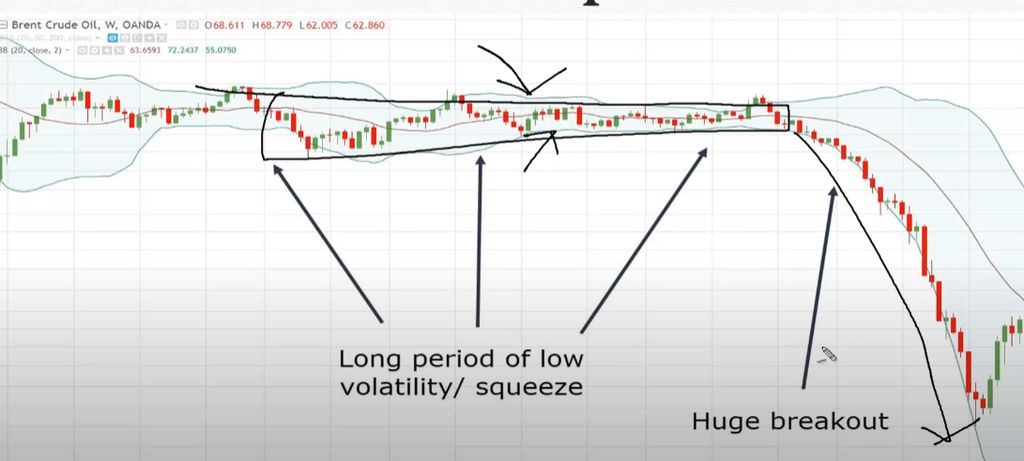Bollinger Bands Strategy for Binary Options Trading
Introducing a dynamic approach that combines cutting-edge analysis with meticulous planning, this strategy offers a unique way to navigate the binary options market. By leveraging the power of advanced indicators, it enables traders to make informed decisions and seize profitable opportunities.
With this strategy, you’ll gain an edge in the market by utilizing a powerful tool that adapts to changing conditions. By incorporating a range of indicators, such as the volatility-based bands, you’ll be able to identify key trends and make precise predictions. This method empowers traders to capitalize on market fluctuations and maximize their potential profits.

An Effective Approach for Binary Options Trading Using Bollinger Bands
By incorporating Bollinger Bands into your trading strategy, you can gain valuable insights into market trends and potential price movements. These bands act as dynamic indicators, providing visual representations of price volatility and identifying potential entry and exit points.
- Utilizing Bollinger Bands can help traders identify periods of low volatility, indicating potential upcoming market breakouts.
- Traders can use the upper and lower bands of the Bollinger Bands to determine overbought and oversold conditions, helping them make informed decisions on when to enter or exit trades.
- The width of the Bollinger Bands can provide insights into market volatility, with narrower bands indicating lower volatility and wider bands suggesting higher volatility.
- Combining Bollinger Bands with other technical indicators can further enhance the effectiveness of this strategy, allowing traders to confirm potential trade opportunities.
Implementing the Bollinger Bands strategy requires a thorough understanding of how to interpret the bands and effectively use them in conjunction with other analysis tools. Traders should also consider risk management techniques and set appropriate stop-loss levels to protect their investments.
Overall, the Bollinger Bands strategy offers a proven method for successful binary options trading. By utilizing these dynamic indicators, traders can gain valuable insights into market trends, identify potential entry and exit points, and make informed decisions based on market volatility. Incorporating this strategy into your trading approach can significantly improve your chances of achieving profitable outcomes.
Understanding Bollinger Bands: A Fundamental Aspect of the Trading Approach
When it comes to implementing a successful trading strategy in the binary options market, it is crucial to have a solid understanding of various technical indicators and tools that can assist in making informed trading decisions. One such key element that traders often rely on is the concept of Bollinger Bands. These bands, which are derived from statistical calculations, provide valuable insights into market volatility, price levels, and potential trend reversals.
The Concept of Market Volatility
Before delving into the specifics of Bollinger Bands, it is essential to comprehend the concept of market volatility. Volatility refers to the degree of price fluctuation within a given financial instrument or market. It plays a vital role in determining the potential risks and rewards associated with a trading opportunity. High volatility often indicates larger price movements, while low volatility suggests relatively stable price levels.
The Construction and Interpretation of Bollinger Bands
Bollinger Bands consist of three lines: the middle band, the upper band, and the lower band. The middle band is typically a simple moving average of the asset’s price over a specified period, while the upper and lower bands are derived from adding and subtracting a multiple of the standard deviation from the middle band.
These bands dynamically adjust to market conditions, expanding during periods of high volatility and contracting during periods of low volatility. By visually representing volatility levels, Bollinger Bands provide traders with valuable information about potential price breakouts, trend reversals, and price levels that may act as support or resistance.
| Key Features of Bollinger Bands | Interpretation |
|---|---|
| Price approaching the upper band | Potential overbought condition |
| Price approaching the lower band | Potential oversold condition |
| Price touching or crossing the upper band | Potential trend reversal or breakout |
| Price touching or crossing the lower band | Potential trend reversal or bounce |
Implementing the Bollinger Bands Approach for Trading Binary Options
When it comes to effectively trading binary options, it is crucial to have a well-defined strategy in place. One popular and proven method that traders often rely on is the implementation of the Bollinger Bands approach. This approach utilizes a combination of technical indicators to identify potential entry and exit points, allowing traders to make informed decisions and increase their chances of success.
Understanding the Concept of Bollinger Bands
In order to implement the Bollinger Bands approach, it is essential to have a clear understanding of the concept behind this technical indicator. Bollinger Bands consist of three lines: the upper band, the middle band, and the lower band. The middle band is typically a simple moving average, while the upper and lower bands are calculated by adding and subtracting a standard deviation from the middle band.
The primary purpose of Bollinger Bands is to provide traders with a visual representation of price volatility. When the price is relatively stable, the bands are closer together, indicating low volatility. Conversely, when the price is more volatile, the bands widen, signaling higher volatility. Traders can use these fluctuations to identify potential breakouts or reversals in the market.

Implementing the Bollinger Bands Strategy
Once traders have a solid understanding of Bollinger Bands, they can begin implementing the strategy for trading binary options. The first step is to identify a suitable asset and timeframe for analysis. Traders can then plot the Bollinger Bands on their price chart and analyze the price action in relation to the bands.
One common approach is to look for a period of consolidation, where the price is trading within a narrow range and the bands are close together. This indicates low volatility and the potential for a breakout. Traders can then wait for the price to break above the upper band or below the lower band, signaling a potential trend reversal or continuation.
Additionally, traders can use Bollinger Bands to identify overbought or oversold conditions. When the price reaches the upper band, it may be considered overbought, and a potential reversal could be on the horizon. Conversely, when the price reaches the lower band, it may be considered oversold, indicating a potential buying opportunity.
To further refine their trading strategy, traders can incorporate other technical indicators or tools, such as trendlines, candlestick patterns, or momentum oscillators. By combining multiple indicators, traders can increase the accuracy of their signals and improve their overall trading performance.
| Advantages | Disadvantages |
|---|---|
| Provides a visual representation of price volatility | May generate false signals in ranging markets |
| Can be used to identify potential breakouts or reversals | Requires additional analysis and confirmation |
| Can be combined with other indicators for increased accuracy | Does not guarantee 100% success rate |
Tips and Best Practices for Successful Trading with Bollinger Bands
1. Understanding the Volatility
One of the key elements of Bollinger Bands is volatility. It is crucial to have a clear understanding of the volatility of the underlying asset before making any trading decisions. Volatility can provide valuable insights into potential price movements, allowing you to adjust your trading strategy accordingly.
2. Identifying Trend Reversals
Bollinger Bands can also be used to identify trend reversals. When the price of an asset reaches the upper or lower band and starts to reverse, it can signal a potential trend reversal. Paying attention to these signals can help you enter or exit trades at the right time, maximizing your profits.
3. Setting Proper Stop Loss and Take Profit Levels
Proper risk management is essential in any trading strategy. With Bollinger Bands, you can use the bands as a guide to set appropriate stop loss and take profit levels. By placing your stop loss just outside the bands, you can limit your potential losses. Similarly, setting your take profit level near the opposite band can help you secure your profits.
4. Combining Bollinger Bands with Other Indicators
To further enhance your trading strategy, consider combining Bollinger Bands with other technical indicators. This can provide additional confirmation signals and increase the accuracy of your trades. Popular indicators to consider include the Relative Strength Index (RSI), Moving Averages, and MACD.
5. Regularly Review and Adjust Your Strategy
Successful trading requires continuous learning and adaptation. Regularly review your trading strategy and analyze your past trades to identify areas of improvement. Adjust your strategy accordingly to stay ahead of market trends and maximize your profitability.
- Always conduct thorough research and analysis before entering any trade.
- Practice discipline and stick to your trading plan.
- Utilize proper risk management techniques, such as position sizing and diversification.
- Keep emotions in check and avoid making impulsive trading decisions.
- Stay updated with market news and events that can impact your trades.
FAQ:
What are Bollinger Bands?
Bollinger Bands are a technical analysis tool that consists of a moving average line and two standard deviation lines plotted above and below it. They are used to measure the volatility and potential price levels of an asset.
How can Bollinger Bands be used in binary options trading?
Bollinger Bands can be used in binary options trading as a tool for identifying potential entry and exit points. Traders can look for price breakouts or bounces off the bands to make trading decisions.
What is the strategy for using Bollinger Bands in binary options trading?
The strategy involves waiting for the price to touch or go outside the upper or lower band and then placing a trade in the opposite direction. This is based on the assumption that the price will revert back to the moving average.
Are Bollinger Bands a reliable method for successful trading?
Bollinger Bands can be a useful tool in trading, but like any strategy, it is not guaranteed to be successful all the time. Traders should use additional indicators and analysis to confirm signals provided by the Bollinger Bands.
Can Bollinger Bands be used for other types of trading?
Yes, Bollinger Bands can be used in various types of trading, including stocks, forex, and commodities. The concept of measuring volatility and identifying potential price levels is applicable across different markets.





